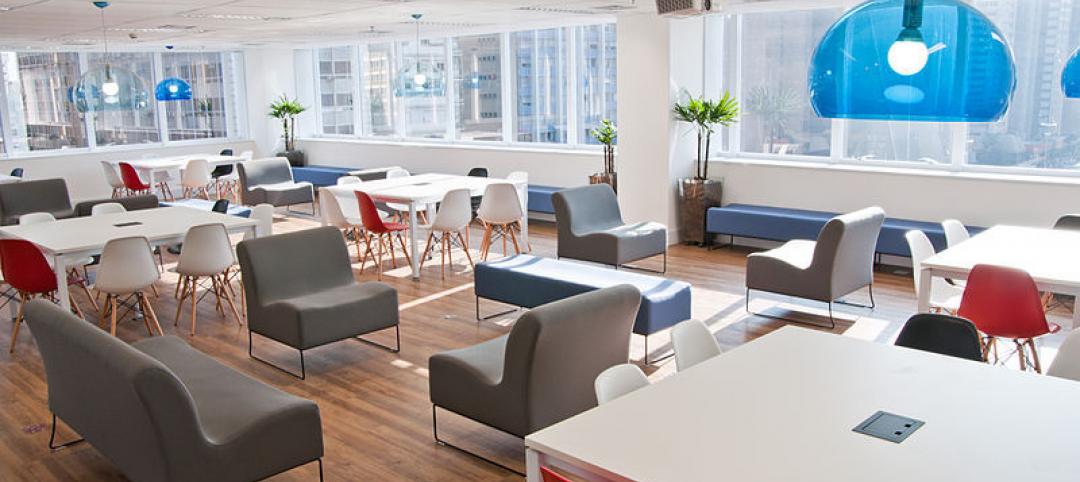Developers of multifamily apartment buildings remain mostly positive about their markets’ current conditions, according to the latest quarterly tracking data that the National Association of Home Builders released on February 26.
NAHB’s Multifamily Production Index (MPI), based on responses from 93 developers across the country, stood at 54, on a scale of 0 to 100, in the fourth quarter of 2014. The Index—a composite measure of developer sentiments about construction for low-rent units, market-rate rentals, and for-sale condos—registered above 50 for each quarter last year, and has been hovering at 50 or higher since the first quarter of 2013.
The latest reading “is in line with our view that the multifamily segment of the industry has largely recovered from the downturn,” said NAHB Chief Economist David Crowe. “After increasing steadily over the past several years, multifamily production has now reached a healthy, sustainable level.”
Developers’ attitudes are also reflected in their willingness to take on future projects. In January, permits issued for buildings with five or more units rose by 13.8% to an annualized rate of 372,000, according to the Census Bureau.
A closer look at the numbers finds that developers’ sentiments about current conditions for market-rate starts, at an index of 62, were more robust than their sentiments for either low-rent starts (52) or for-sale condo starts (50).
NAHB’s Vacancy Index, which measures the industry’s perception about apartment vacancies, stood at 39 in the fourth quarter of 2014, compared to 38 for the same quarter a year earlier. (The lower the index, the fewer the perceived vacancies.) Interestingly, developers perceived lower vacancies for Class B apartments compared to either Class A or C apartments.
Developers’ attitudes are also reflected in their willingness to take on future projects. In January, permits issued for buildings with five or more units rose by 13.8% to an annualized rate of 372,000, according to preliminary estimates released by the Census Bureau on February 18.
Multifamily starts in January were up 24.5% over the same month a year earlier to an annualized rate of 381,000 units. In 2015, NAHB expects multifamily starts ultimately to increase modestly to around 358,000. “Because of strong job growth, we expect to be able to keep building for the foreseeable future,” said W. Dean Henry, CEO of Legacy Partners Residential in Foster City, Calif., and chairman of NAHB’s Multifamily Leadership Board.
Financing projects should not be an issue, as more lenders are jumping into this sector. Banks and Commercial Mortgage-Backed Securities lenders increased their market share of lending for multifamily projects through 2014, and are expected to be even bigger players this year, as Fannie Mae and Freddie Mac pull back. “Capital is plentiful and many lenders are expanding their target markets for investments,” observed Faron Thompson, head of Jones Lang LaSalle’s multifamily debt finance team.
It’s worth noting, though, that Fannie and Freddie expect demand for multifamily housing to soften a bit over the next two years, and for most of the growth to occur in a limited number of metro markets.
Related Stories
Multifamily Housing | Sep 5, 2017
Free WiFi, meeting rooms most popular business services amenities in multifamily developments
Complimentary, building-wide WiFi is more or less a given for marketing purposes in the multifamily arena.
University Buildings | Sep 1, 2017
The University of Texas receives boutique-style student housing complex
The Ruckus Lofts provide 46 furnished units and 165 beds for UT students.
Mixed-Use | Aug 30, 2017
Former industrial building becomes 'lifestyle community' in ever-evolving Baltimore
The new community offers 292 apartments with 20,000 sf of retail space.
University Buildings | Aug 25, 2017
‘Chapel of food’ becomes one of Clemson’s go-to spaces on campus
The new dining hall is part of the school’s ongoing efforts to maintain its standing among the country’s top 20 public universities.
Multifamily Housing | Aug 24, 2017
Storage units, lounges most popular indoor and outdoor amenities in multifamily developments
Tenants and condo owners crave extra space for their stuff. Most developers are happy to oblige.
Mixed-Use | Aug 15, 2017
A golf course community converts into an agrihood with 1,150 homes and a working olive grove
The community will cover 300 acres in Palm Springs, Calif.
Multifamily Housing | Aug 14, 2017
Co-living: The next real estate disruptor or niche market?
From a practicality standpoint, co-living makes complete sense for young, single, and highly mobile working professionals.
Multifamily Housing | Aug 9, 2017
Related Companies unveils plans for One Hudson Yards luxury rental residences
The 33-story tower will be positioned on the High Line with views of the Hudson River and downtown Manhattan.
Multifamily Housing | Aug 9, 2017
Multifamily developers, designers cater to occupants’ need for mobility
Bike storage facilities and “bicycle kitchens” are among the most popular mobility amenities in multifamily developments, according to a new survey by Multifamily Design + Construction magazine.
Mixed-Use | Aug 9, 2017
Mixed-use development will act as a gateway to Orange County’s ‘Little Saigon’
The development will include apartments, ground-floor retail, and a five-story hotel.

















